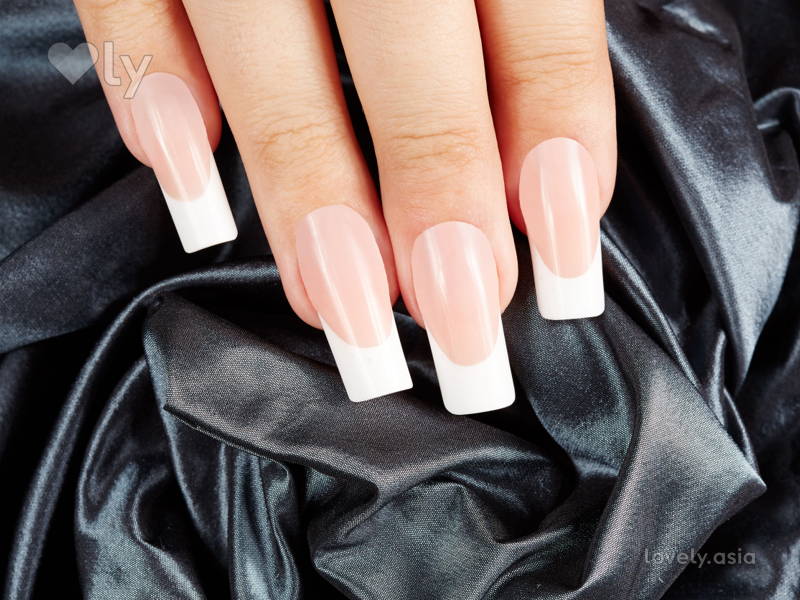You’ve probably wondered about nail extensions more than once. We give you the low-down.
Nail extensions give you the freedom to take on styles and shapes your mere mortal nails can’t handle, like Kylie Jenner’s coffin nails. But what exactly are nail extensions and how do they work?
There are a couple of reasons why someone might opt for extensions: they may have broken a nail or two and want to fix them so they’re the same length as their other natural nails, they may want immediate length for an event or just because, or they may simply want to sport a more complex shape or nail art that natural nails cannot support.
If these make you say “omg I need this!”, read on before your next trip to the nail spa!
Here are a few you can choose from!
- Tip overlay: ‘Tips’ are lightweight pieces of plastic that are attached to the ends of your nails, then covered in a gel or acrylic solution which creates a protective layer.
- Sculpting: A disposable ‘form’ is fitted over your nail. Using a gel or acrylic solution, an artificial nail is moulded onto the form which is then removed.
- Fiberglass or silk wraps: Pieces of fiberglass or silk are fitted to your nail bed, then sealed down with resin or glue.

SOURCE: wennermedia.com
- Comfort: Think of extensions as new claws. Super cool! However, they also make some everyday things super difficult – taking out your contact lenses, sending a text, opening a jar of peanut butter. Take these into consideration when deciding on length.
- Availability: Extensions that use acrylic or gel solutions are staples for most nail spas, while you might want to check ahead for fiberglass and silk wraps.
- Nail spa: Poorly applied extensions can fall off almost immediately or cause damage to your nails, so look for reputable spas and technicians.
- Medical concerns: Acrylic nails are not recommended for pregnant women or those with breathing problems because of the chemicals and fumes involved. Your nails may also be sensitive to the ingredients used in the gel or acrylic process, in which case fiberglass would be the better option.
- Duration of service: Both tip overlays and sculpting can take anywhere between 45 minutes to 2 hours, depending on which method your nail technician is most familiar with – check ahead if you’re in a hurry.
- Nail health: If you’ve got brittle nails, opt for gel solutions. These do not cause damage to your natural nails, unlike acrylics which make it hard for your nails to breathe and grow. In fact, some gel solutions protect your nails and make them stronger!
- Cost: Acrylic nails are generally cheaper than their gel and fiberglass counterparts.
- Length of wear: Acrylic nails are incredibly strong; with proper care, they can last for up to 3 months. In comparison, gel nails are less durable. Fiberglass nails are also more often used to treat damaged nails, and are intended for short term wear.
- Design: Gel nails are glossier and look more natural, so they’re a better choice if you’re going for something simple. On the other hand, acrylic nails are hardier and better suited to elaborate nail art with embellishments.
- Safety: There is some concern about the flammability of ingredients in acrylic nails; proceed with caution if you work closely with heat. Nail extensions are also not allowed in some professions such as medicine and F&B where there is a risk of infection.
- Post-treatment upkeep: There’s a catch to the long-lasting quality of nail extensions – you’ll need to return to the nail spa every 2-3 weeks for ‘infills’. These are maintenance sessions to reapply the solution to the re-growth area. These are very important(!) as the extension can separate from your nail bed and expose you to yucky germs without regular upkeep.
TLDR: Extensions aren’t a one-off time investment. - Post-treatment care: Trauma to your nail beds – knocking them on a hard surface, for example – can lead to some pretty serious infections. They rarely happen with proper care, but if you’re a clumsy, careless person who’s known to fall over very often and eat the slice of pizza that fell with you – nail extensions are probably not the best idea.
- Removal: Acrylic and gel extensions can be removed at home with the proper research and materials. However, there is a real risk of causing damage to your nail beds so we highly recommend returning to your nail spa to remove them. Remember to factor in the cost!
You’ve probably wondered about nail extensions more than once. We give you the low-down.

 ?>
?>
 ?>
?>
 ?>
?>
 ?>
?>
 ?>
?>
 ?>
?>
 ?>
?>
 ?>
?>
 ?>
?>


























